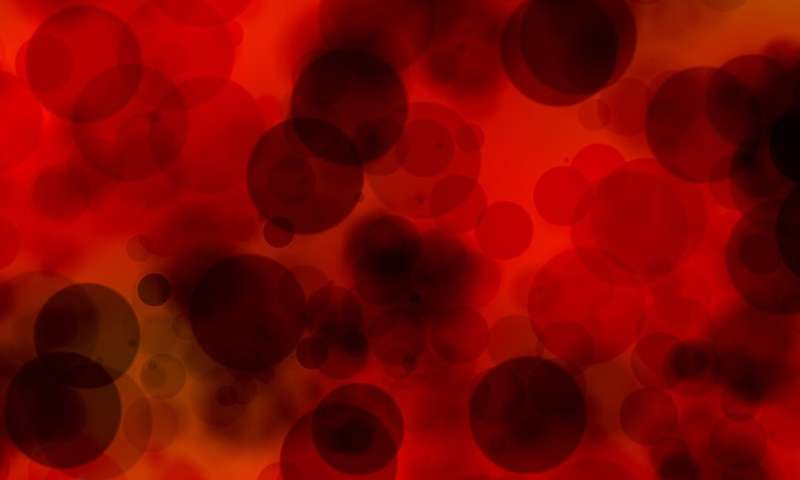Researchers find potential cure for deadly iron-overload disease


Motivated by the loss of a patient, a doctor leads a research effort to uncover the molecular mechanisms of hemochromatosis in the heart.
When Angelina Cossey Dellacqua finally got the liver transplant her mother had been praying for, she was already so sick and weak that it remained a daily struggle to survive. For the three weeks she spent in the critical care unit after the surgery at Stanford Hospital, she battled hard to recover, with both her mother and her doctor constantly by her side.
“Angelina required maximal support and close care throughout the day and night,” said June-Wha Rhee, MD, who was a cardiology fellow at Stanford Medicine at the time. “She used to be a healthy, active young mother. She was a fighter, so motivated to get better for her 3-year-old daughter.”
But on Oct. 19, 2015, Dellacqua died of acute heart failure due to a complication of an underlying disorder called hemochromatosis, which causes a toxic buildup of iron in various organs of the body. She was 29. Dellacqua’s liver was black with iron deposits when the surgeons removed it, an indication of the disease. In addition to causing liver toxicity, the excess iron had damaged her heart. The medical team did everything they could to save her, Rhee said, but there were no viable treatment options.
“When my girl passed, I really just lost my mind,” said Vickie Dellacqua, Angelina’s mother. “She was amazing, so compassionate, always giving things to people. She was a fighter, too. She told her doctors she didn’t want to leave. … Now, I have her daughter, Valentina. She’s my lifesaver.”
Motivating years of research
The memory of Angelina Dellacqua, and other patients like her, has been the motivation behind Rhee’s subsequent years of research to find a treatment option that could have saved the young mother’s life. In a recently published study in Cell Reports, Rhee and her colleagues at the Stanford School of Medicine determined that a drug called ebselen may be able to prevent heart failure in patients with iron-overload disease.
“This has the potential to someday be used in the clinic,” said Rhee, now an instructor at the Stanford Cardiovascular Institute. She said the drug, not yet approved by the Food and Drug Administration, was shown to block the entry of iron into human heart cells grown in the lab.
“We were able to use technology developed in our lab to come up with a model to show the mechanisms of iron overload in the heart,” said Joseph Wu, MD, Ph.D., director of the Stanford Cardiovascular Institute and senior author of the study. “We previously developed this technique using stem cells so that it can be used to screen medications for various forms of heart toxicity, such as this one.”
Common condition
Hemochromatosis is a common condition in which excess iron can lead to multiorgan dysfunction and damage. The cause can be hereditary or the result of excessive iron supply to the body. Often, it is the result of repeated blood transfusions, which are common after liver transplants, Rhee said. Excess iron deposits in the heart can cause heart failure, which is what happened in Dellacqua’s case.
“Hemochromatosis can be treated by iron chelation therapy, but for many patients this is not an option due to concurrent kidney problems,” Rhee said. In chelation therapy, drugs reduce excess levels of metals in the body to prevent toxicity. “Chelation therapy is, unfortunately, toxic to the kidneys,” Rhee said. “Angelina’s liver disease had also caused kidney failure, so the chelation therapy wasn’t a safe option. That also is not uncommon.”
To investigate the effects of iron overload in the heart, the researchers developed cardiomyocytes, or heart cells, in the lab from induced pluripotent stem cells, which can be coaxed into many tissue types. The cardiomyocytes were further developed into uniformly sized, three-dimensional spheroids of thousands of cells. Each spheroid was about the size of a grain of sand.
“These ball-shaped cell clusters are spontaneously beating in synchrony,” said Dilip Thomas, Ph.D., a postdoctoral scholar in Wu’s lab. Thomas created the spheroids to mimic the mature cell function of a human heart.
“We thought the three-dimensional formulation was important,” Rhee said. “Iron in the blood gets diffused in the heart tissue. The way you diagnose excessive iron accumulation in the heart is by using cardiac MRI test results. In those 3-D images, the heart looks black.”
To mirror iron-overload disease in the lab, the researchers exposed the balls of heart cells to increasing concentrations of iron. As expected, they saw a similar darkening of the heart tissue in MRI images of the miniature heart spheroids, indicating toxic buildup of iron. Further investigations led to a better understanding of the molecular mechanisms of the disease, and researchers were able to identify the channels used by the iron to enter the heart cells.
Exposing heart cells to drugs
Finally, the researchers exposed these heart cells to a series of drugs, looking for an agent to reverse the iron-overload process. Ebselen proved to be the best candidate for blocking the channels for iron entry, potentially protecting against heart failure.
When Rhee started this project about four years ago, she kept in touch with Dellacqua’s mother, reporting back to her on the findings, hoping good news might provide some comfort to her. The two also discussed the possibility that Dellacqua’s daughter, Valentina, might be genetically susceptible to the same disease, making the hunt for a treatment even more pressing.
“I’m so sorry I had to lose my girl, but I’m so glad that they are doing research so that someone else can be alive today,” Vickie Dellacqua said. “I call it Angelina’s research. I never want anybody to forget her.”
Source: Read Full Article